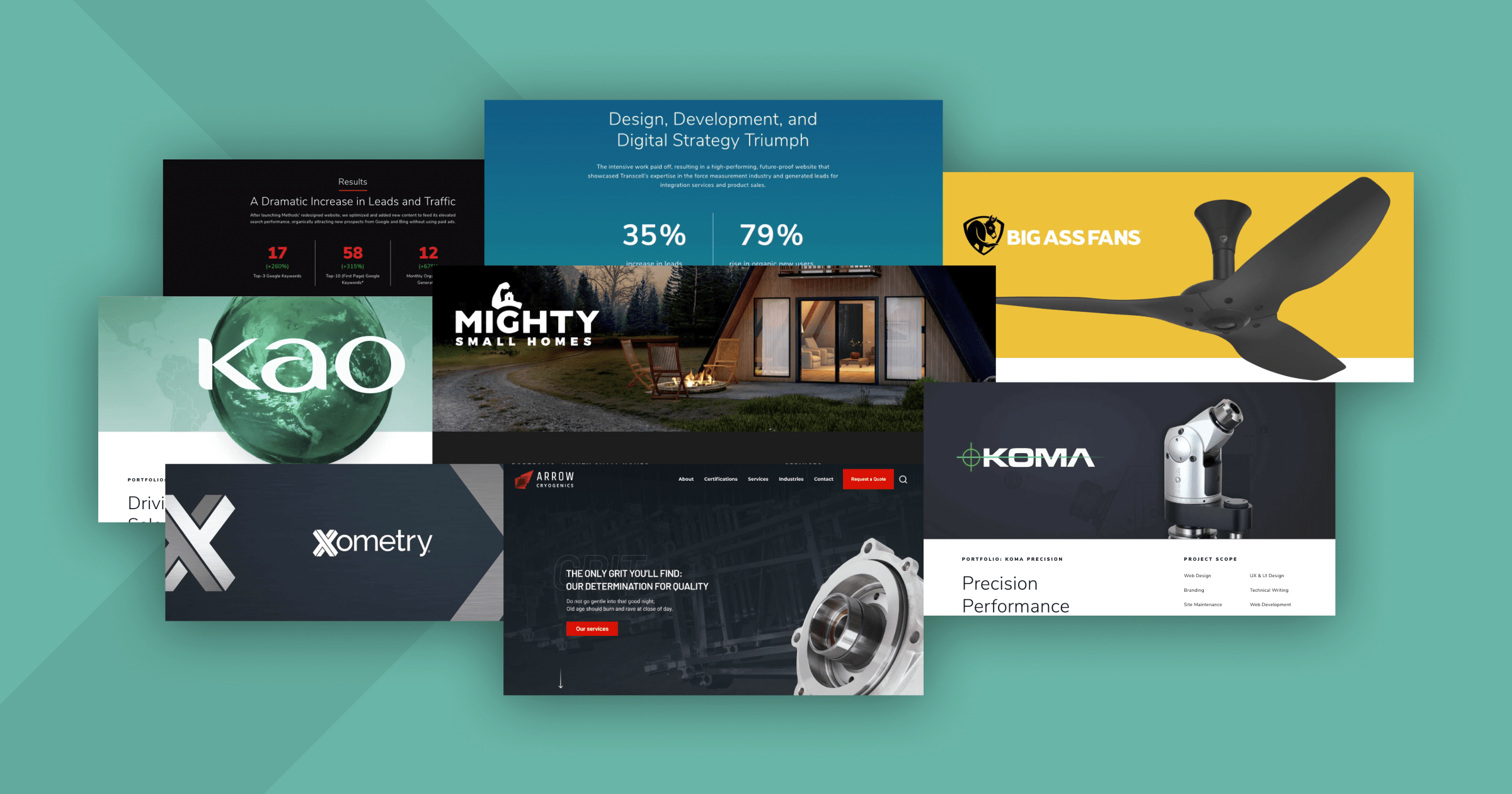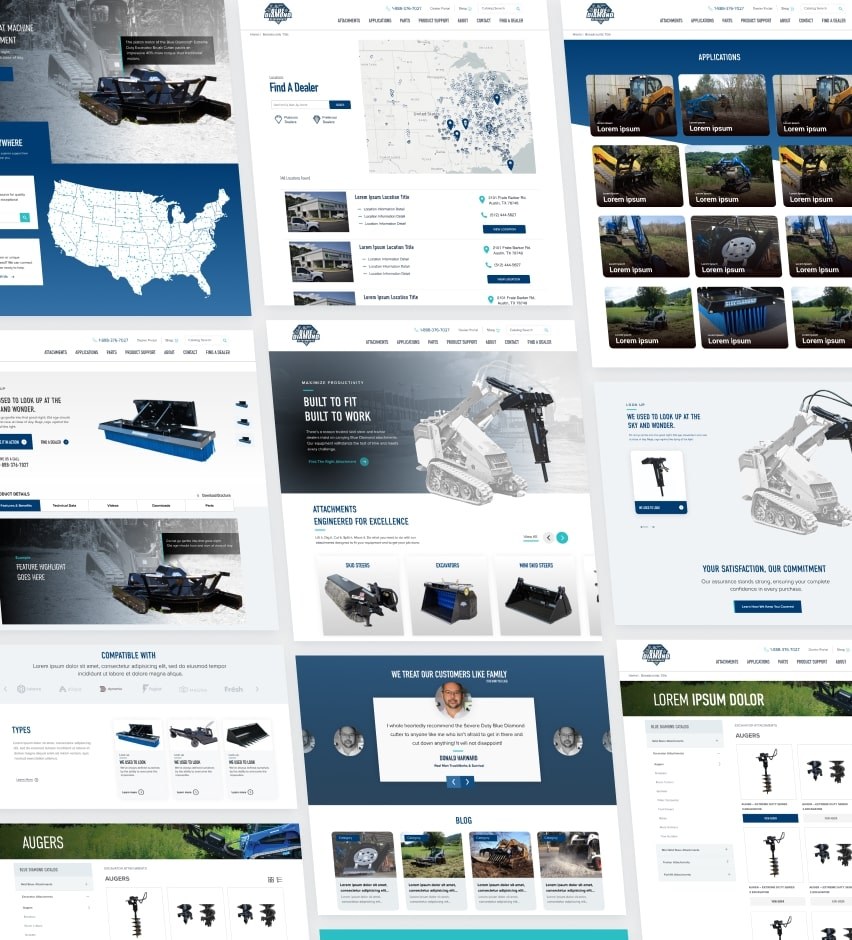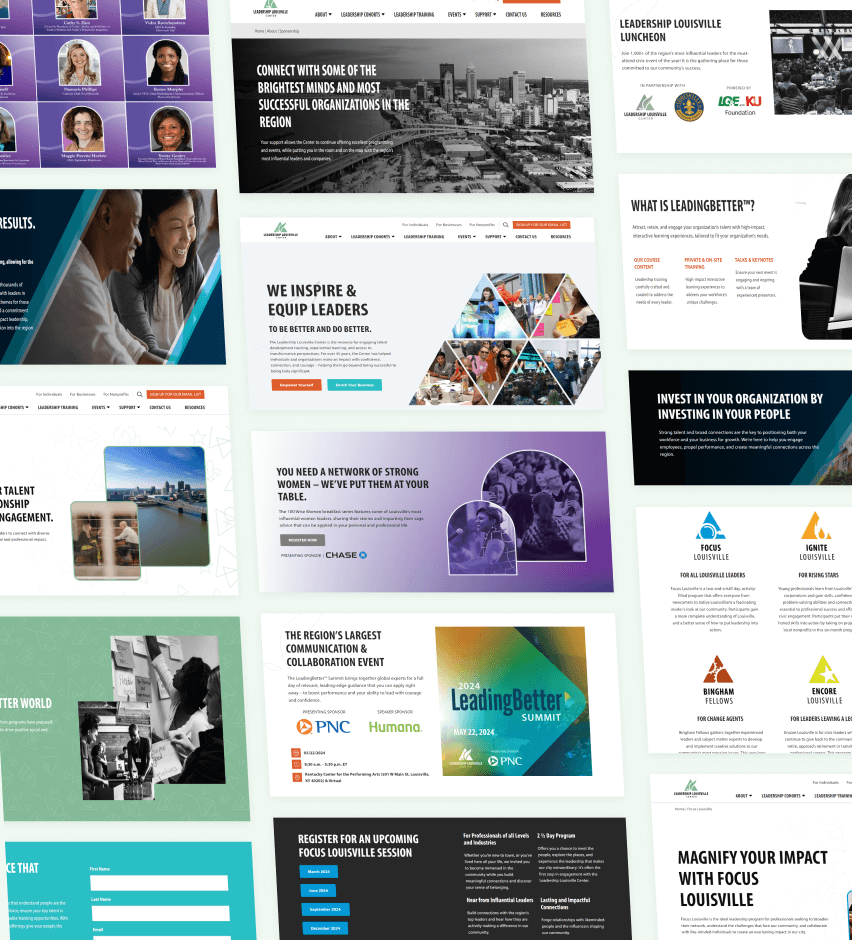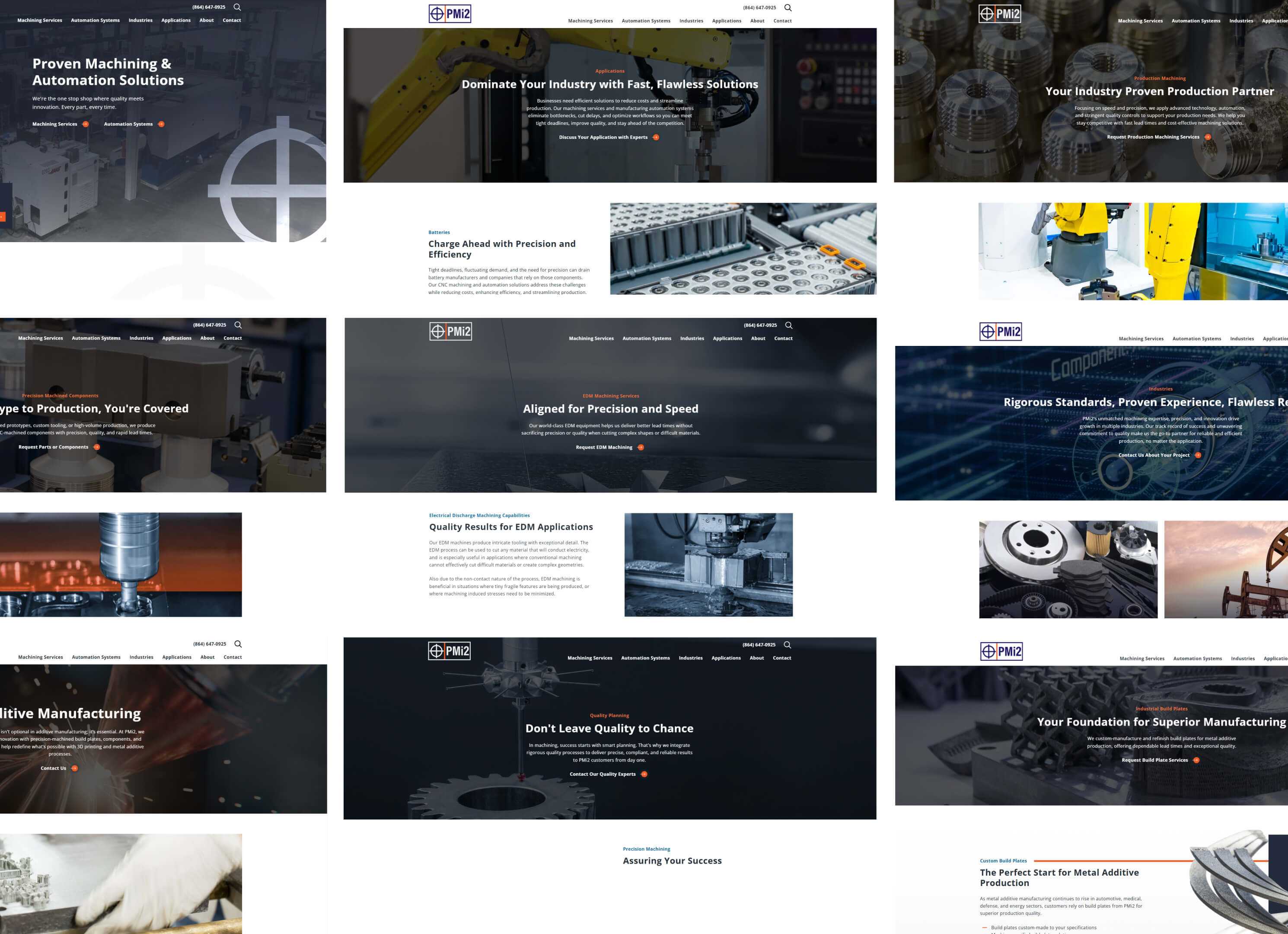

Precision Meets Performance in PMi2’s Website Redesign
Learn how we strategized and executed a redesign of PMi2's website for contract manufacturing and machining automation.
Most B2B manufacturing websites serve as digital storefronts – functional, but forgettable.
That wouldn’t work for PMi2.
The PMi2 team approached DBS Interactive to produce a website that would evolve, scale, and support plans for long-term growth. From the earliest discovery sessions to the launch, every step centered on a single mandate: build a website that stands head and shoulders above the rest.
Like their demanding CNC machining and engineering standards, they needed more in a website. The company’s vision required more than cosmetics.
In this behind-the-scenes look, you’ll gain insight into the strategic thinking, meticulous design execution, and technical development that sets this project apart.
Defining the Destination
Initial conversations revealed more about the new website's objectives than simply being better than competitors' websites. Our research shows that the bar is low. We planned to set expectations much higher.
The redesign's goal was to create a scalable, high-performing digital platform that could evolve with PMi2’s needs today and in the future.
Project Goals
- Scalable – Design the website with a flexible structure to expand as PMi2 introduces new services, capabilities, and industries.
- Enhance User Experience – Feature intuitive navigation, optimized performance, and clear content pathways for visitors to find relevant information quickly.
- Elevate the Brand – Strengthen the company’s leadership with a refreshed design and messaging to reinforce trust, credibility, and expertise.
DBS and PMi2 collaborated to identify key information to support decisions during an extensive strategic planning phase. This established the foundation for the project, aligning the strategy with business goals.
Challenges: Breaking Through Barriers

Much like a CNC machining job or engineering project without clear specifications can lead to wasted time, materials, and errors, we knew that failing to address challenges in the project could result in delays or inefficiencies down the line.
Challenges create opportunities for exploring fresh ideas.
These hurdles helped us frame discussions about audiences, design, and technical specifications.
Outdated Design and User Experience: The previous website suffered from an outdated design that no longer reflected PMi2’s innovative approach or high-quality services. This, combined with a poor user experience, made it difficult for visitors to navigate the site and find relevant information.
Lack of Scalability: PMi2 wanted to diversify service offerings, but the old website lacked flexibility. The platform couldn’t accommodate the introduction of new products, services, or features, leaving the company at a disadvantage in an increasingly competitive market.
Differentiating the Brand: A big challenge was telling a story and communicating its comprehensive capabilities. Known for machining expertise, PMi2 has now expanded into areas like automation and quality assurance. The new site had to showcase these services, demonstrating that it was more than just “a machine shop.”
Compelling Messaging: Crafting messaging that resonated with existing and new audiences was key. The new website had to reflect PMi2’s personality and speak to potential clients, from manufacturers seeking precision machining to those looking for innovative automation solutions.
Market Positioning and Services: With a broader service portfolio, PMi2 needed a platform that clearly communicated its leadership in machining, automation, and quality assurance while emphasizing its innovative approach and new offerings. The redesigned website would position PMi2 as a forward-thinking, diversified industry leader.
Real Conversations, Real Insights, Real Impact
In the discovery phase, stakeholder interviews provided invaluable insights that no amount of secondary research could replace. Conversations with primary sources, including internal stakeholders and customers, revealed information about frustrations, motivations, industry trends, and business challenges.
We discovered how the website could reduce friction by streamlining the ordering process for existing customers. Stakeholders also highlighted the increasing need for security processes, which presented an opportunity for brand elevation and messaging.
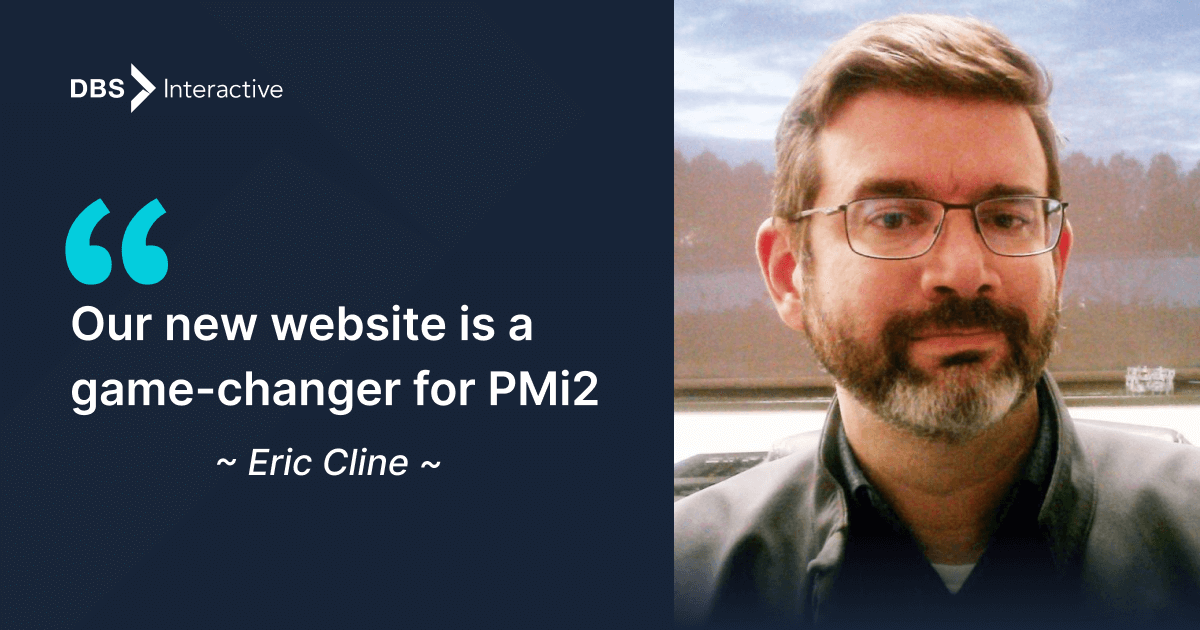
Beyond the facts and experiences, we discerned PMi2's genuine passion for delivering precision parts and services that support its customers.
These insights became the foundation for creating user personas, user stories, and user pathways that would drive the design and functionality of the new website.
Aligning the digital experience with the real-world challenges and opportunities identified during these interviews allowed the team to focus on ensuring it would meet business objectives and user needs from day one.
We aimed to deliver a user experience with effective functionality and messaging to achieve measurable digital results. This approach ensured the PMi2 website delivers business results and proves success through data-driven performance.
What followed was a critical and collaborative process around strategy, design, and development that defined the specifics.

Strategy Fuels a Website Built for Success
There's an understandable temptation to rush ahead to style tiles or mock-ups—the visuals—but the groundwork had to come first.
We needed to map out the personas into user stories and user journeys, laying the foundation for the site’s structure and content based on what we learned from the interviews.
“What stood out the most in these discussions wasn’t just the challenges; it was the passion that PMi2 has for delivering precision. That passion needed to be reflected in the new website,” said Steve Fowler, Marketing Director at DBS.
Personas
The next stages began distilling the website users' identities and needs. Personas are painted with a broad brush.
Defining each persona's distinct motivations, pain points, and goals laid the foundation for a user-first approach that would resonate with PMi2's target audience.
To bring these personas to life, we divided them into key attributes that shape their decisions and interactions with the website.
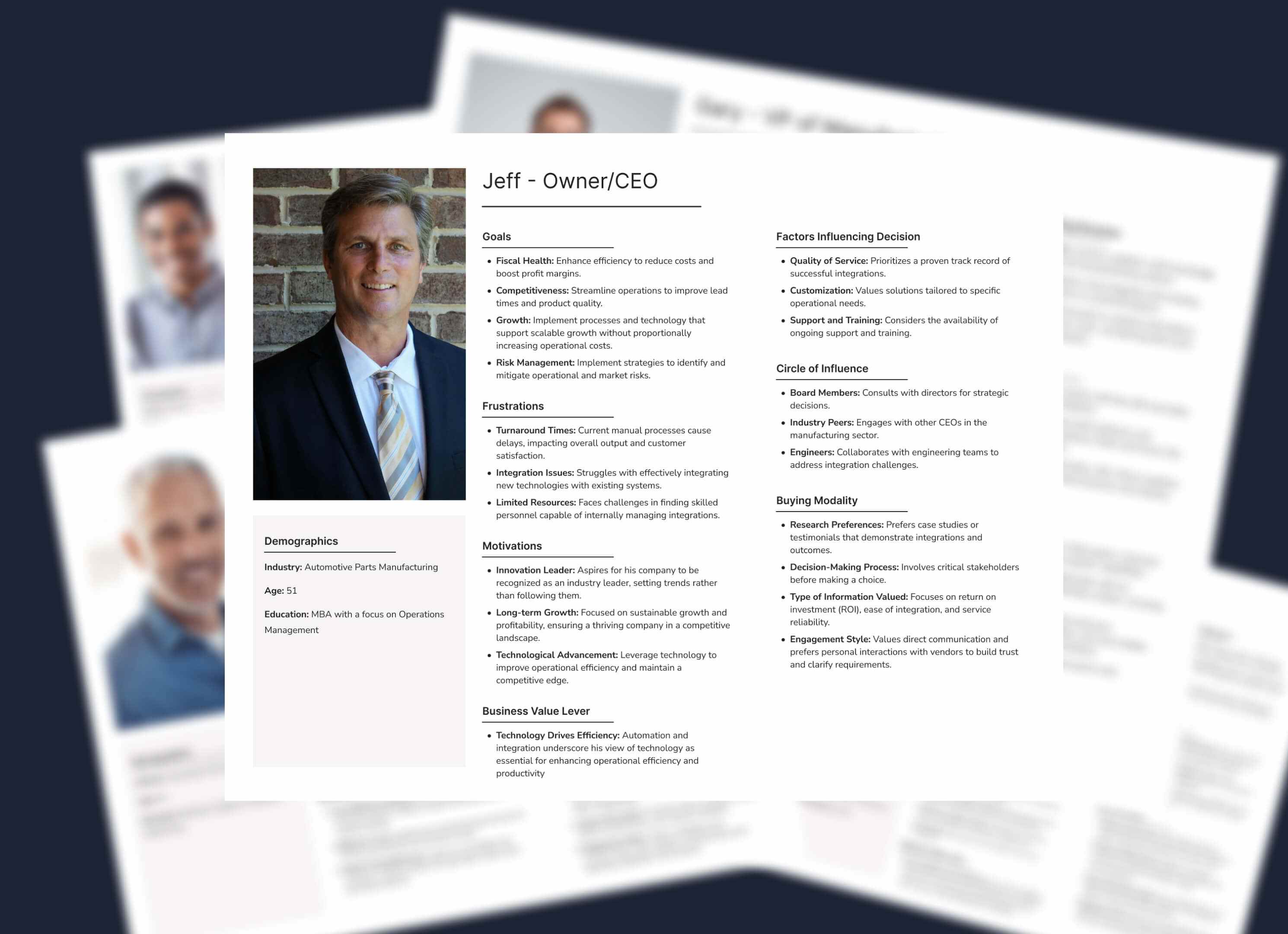
- Demographic Bio: Summarizes the age, gender, occupation, and education.
- Goals: The primary objectives or outcomes the persona wants to achieve.
- Frustrations: Pain points and challenges the persona faces in their current situation.
- Motivations: Internal and external drivers that influence the persona's actions and decisions.
- Business Value Lever: Specific ways the persona's actions contribute to business success.
- Factors Influencing Decision: Identify what affects the decision-making.
- Circle of Influence: Individuals or groups influencing the persona's choices and behavior.
- Buying Modality: Preferred methods and channels through which the persona purchases or engages with services.
With these attributes in place, we focused on the real people behind them—each with unique roles, challenges, and goals. These personas became the lens through which we crafted a website experience that speaks directly to their needs.
- Eric – Quality engineer
- Carl – Manufacturing manager
- Jeff – Owner/CEO
- Gary – VP of manufacturing
Only when this foundation is solid could we begin to see how the design will flow, ensuring an intuitive and impactful user experience.
User Stories
Personas define who our users are, but user stories define what they need. At this stage, we translated each persona into clear, goal-oriented narratives that outlined their key actions on the site.
For a CEO, that might mean quickly assessing a supplier's capabilities. A quality engineer? Finding technical specs without friction. A manufacturing manager? Ensuring fast, reliable procurement.
The user stories detailed what the individuals needed and why it mattered.
These stories directly influenced the website’s navigation and functionality while offering hints about messaging that would appeal to visitors.
Each persona’s needs were distilled into this goal-driven structure.
"As a [persona], I want to [action] so I can [goal]."
"As a decision-maker, I want to validate a supplier’s credibility so I can make an informed choice."
"As a technical buyer, I want to compare specifications so I can ensure product compatibility."
"As an operations leader, I want to check lead times so I can plan production effectively."
Finally, we looked beyond the immediate project scope, exploring options and alternatives supporting future growth and scalability—ensuring the platform could evolve with the client’s needs.
Success Follows User-Centric Design
The framework sets the foundation for organizing the website and guiding user interaction. It focuses on defining navigation and user flows to ensure a smooth, intuitive experience that meets both business goals and user needs.
Navigation and User Flows

Mapping the user pathways based on the user stories and personas helped shape the website’s structure.
As we discussed each persona's needs and behaviors led us to a site framework focused on key areas like services, automation, industries, and applications. This was important because it helped organize and prioritize the content so that users could effortlessly locate the information they needed.
The process involved mapping out a user journey for every goal and motivation identified in each persona while pinpointing opportunities to eliminate friction and address pain points.
By focusing on the user's perspective, we ensured that the site addressed their needs logically and intuitively.
We limited navigation to six choices to keep attention focused on what mattered. Secondary navigation options can often overwhelm users, creating the paradox of choice and slowing down their decision-making.
This choice optimized usability and ensured that the site would serve its intended purpose: delivering an intuitive, user-centric experience.
Site Map and Wireframes
The sitemap acted as the blueprint for how content would be categorized, ensuring that related sections were grouped together in a way that was easy to navigate.
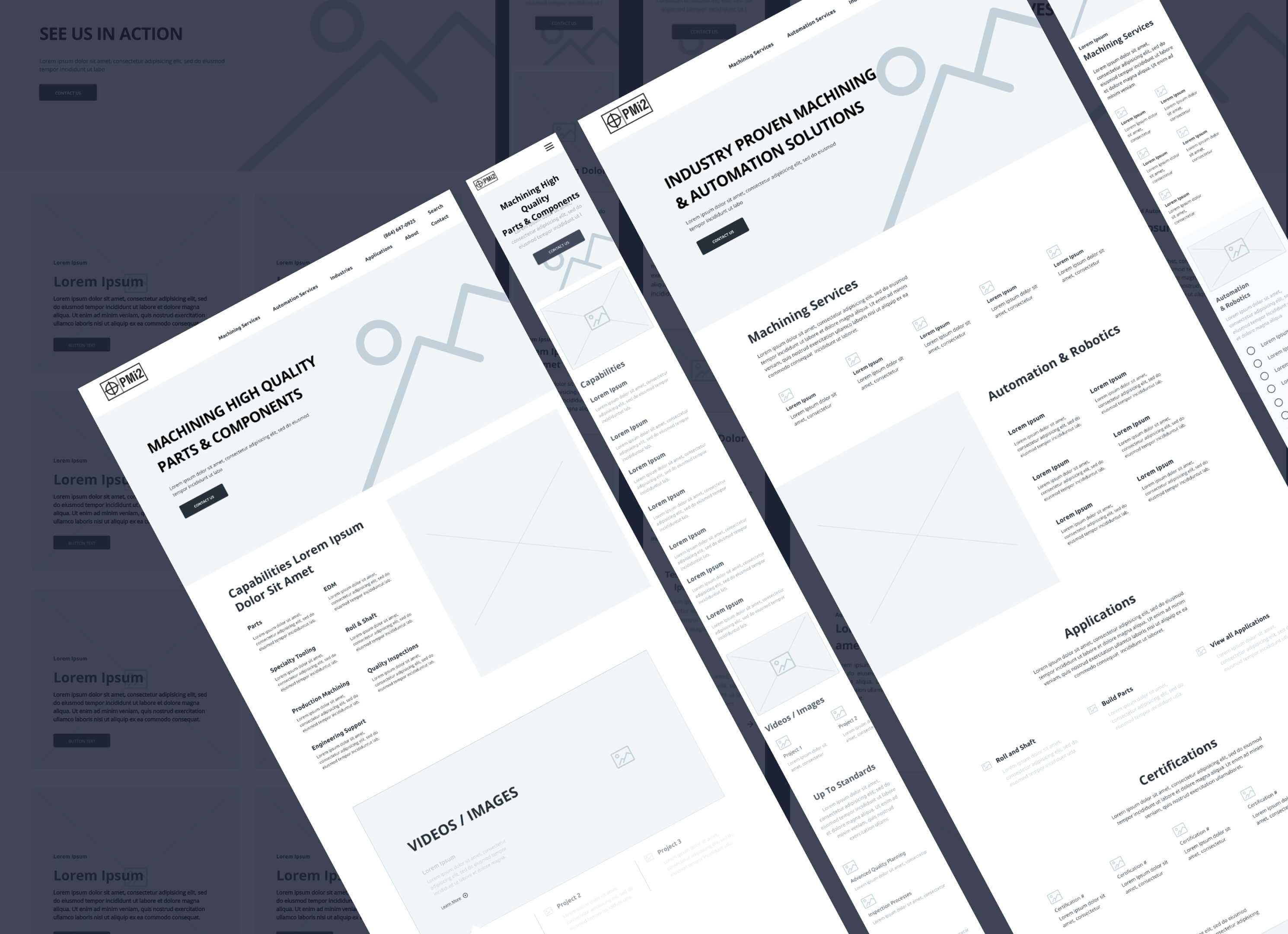
For PMi2, every page and its label in the sitemap was chosen to maximize SEO impact and drive engagement. This careful planning accelerates user access to critical information, streamlines development, and supports business goals by making the site user-friendly and search-engine optimized.
Wireframes followed, serving as the skeletal outline of the website, designed with the user journey in mind.
Just as a building architect plans out the structure and flow of a building to meet the needs of its occupants, our design strategist mapped out the website’s framework to support users' needs.
The wireframes highlighted key page components that delivered the information users needed to make informed decisions or guide them to the next step.
Understanding that busy, time-starved users prefer to scan rather than read every detail, we carefully considered how each page could present the right mix of content types—images, lists, videos, icons—to allow for efficient "window shopping" of services and capabilities.
Each page component was thoughtfully designed to guide users intuitively through the page without being overwhelming.
As the project progressed, the sitemaps became the framework for structuring and producing content, carefully designed to match the user journey and meet their needs at each stage.
Mockups Guide Users with Strategic Visuals and Structural Choices
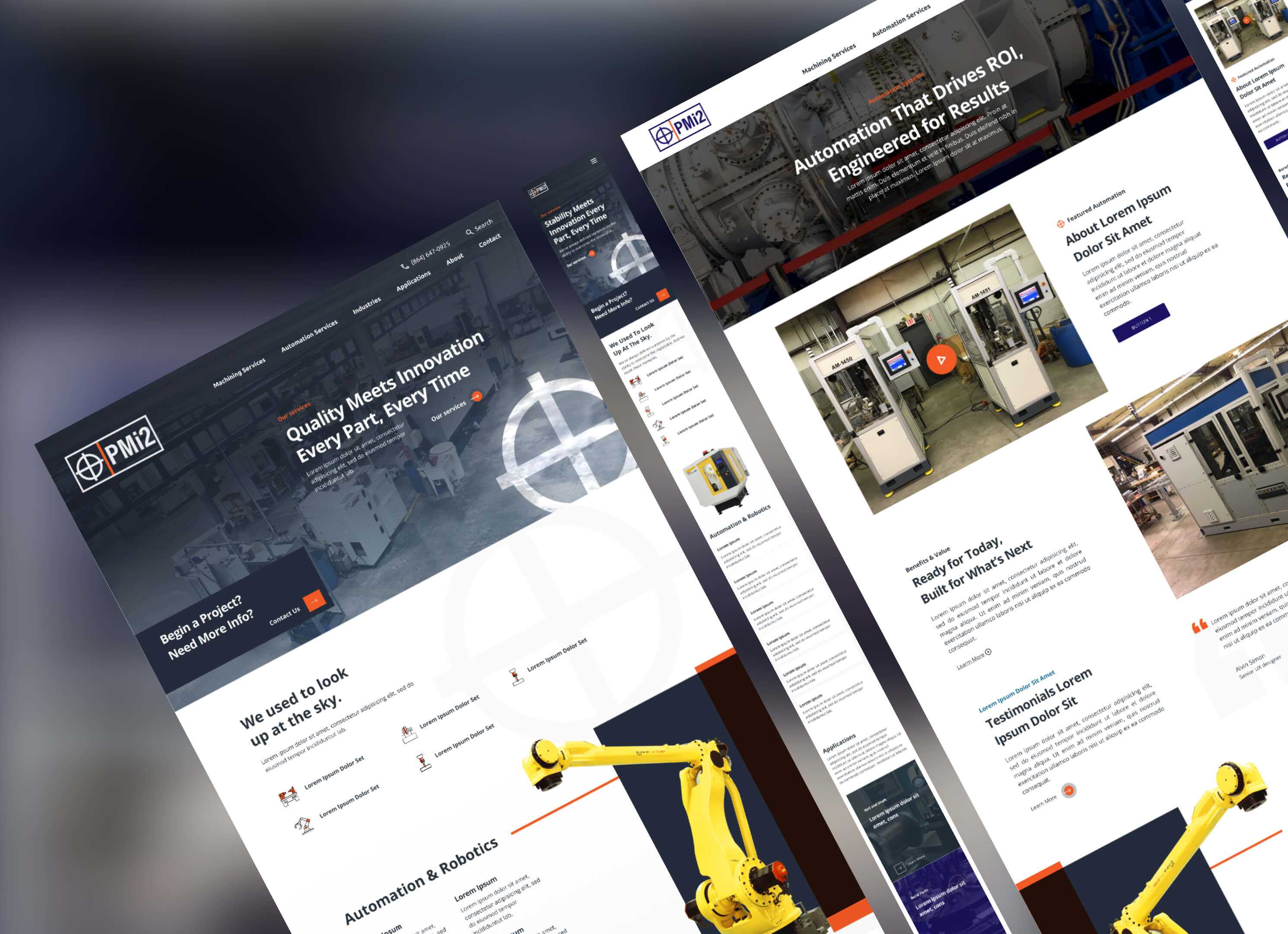
We focused on creating a modern, functional website reflecting the company’s expertise aligned with its brand.
Realistic mockups derived from wireframes, we ensured the design served both the company’s goals and user needs.
The design was anchored in a clean, modern layout, organized with a grid system for better structure. Images, whitespace, icons, and headline size variations were carefully balanced to lead users smoothly from one section to the next.
Product and service information was structured for quick access to specifications, benefits, and case studies, ensuring users could easily find what they needed.
Icons featuring precise line art reinforced IMP3’s brand identity, visually connecting to their expertise while aiding navigation.
Orange accents were strategically used to draw attention, creating visual interest and ensuring key elements stood out.
Additionally, this accent color enhanced their photography, giving it a unique, branded aesthetic.
Striking imagery and videos were key to showcasing PMi2's capabilities. The mockups integrated visuals of machinery and processes, reinforcing credibility and user engagement.
These elements were crucial for aligning with PMi2’s goal of creating an immersive user experience.
Client testimonials, case studies, and certification badges offered social proof that would build trust and showcase PMi2’s expertise.
Developed for Speed, Security, and Content Management
The strategic vision, design, and user experience goals set, and development began, turning the blueprint into a fully functioning website.
The focus shifted to optimizing performance and ensuring accessibility.
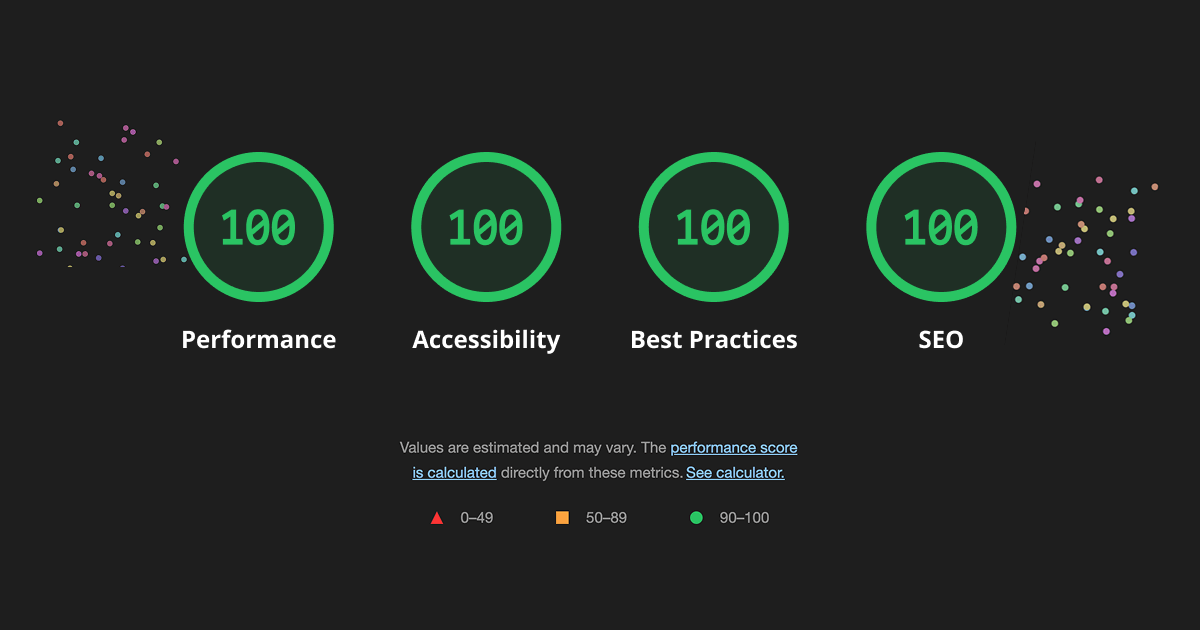
Every technical decision, from the CMS choice to image handling, was centered on delivering a fast web application.
The site was made to be fast, accessible, and easy to manage, keeping the user experience front and center.
Statamic CMS delivered the perfect blend of speed, security, and ease of use. Relying on a flat-file system speeds up load times and reduces potential security threats.
The user-friendly control panel also empowers PMi2’s team to manage and update content easily.
“We built this site to run fast, stay secure, and be easy to manage. Every decision was about making the experience smoother and stronger," said John Golden, Lead Developer.
Optimized for achieving “good grades” in Google Core Web Vitals, we ensured the site loads quickly, responds smoothly, and operates without delays—performance elements that reflect PMi2’s brand promise of speed and quality.
In simpler terms, we made sure the site delivers fast loading times, seamless interactions, and a responsive experience, keeping users engaged while boosting search engine rankings.
Positioned for Whatever’s Next
The new site reflects PMi2’s commitment to excellence and positions the machining and automation company for growth. Its robust, future-proof digital presence supports its mission to serve precision manufacturers and deliver quality solutions.
We focused on creating a user-friendly experience, optimizing the site for fast load times, security, and scalability—each decision working together to support the website holistically.
The result is a digital hub for PMi2 where, much like the business, the whole is stronger than the sum of its parts. It provides a solid foundation that meets the company’s current marketing and operational needs while also preparing for future growth.
Contact Us. Let’s discuss your manufacturing company website.
